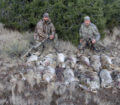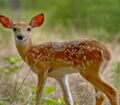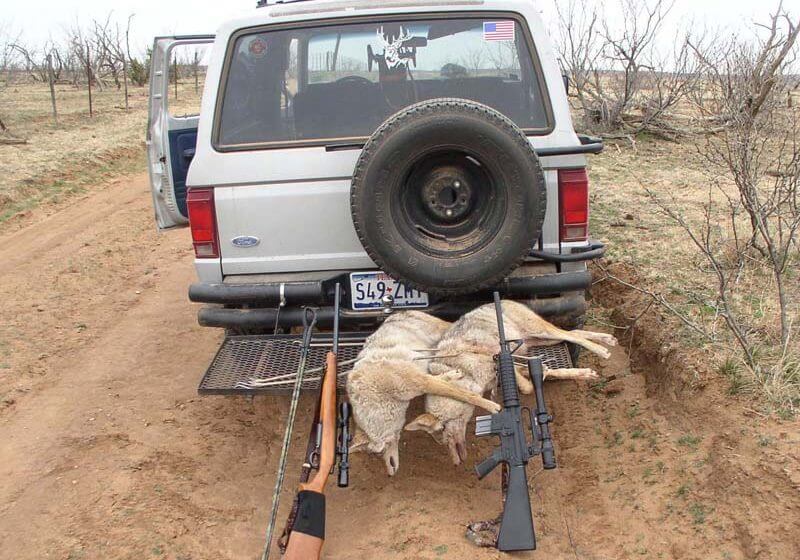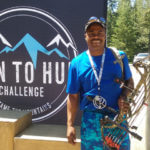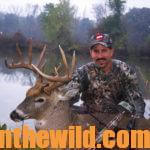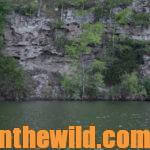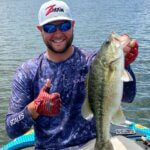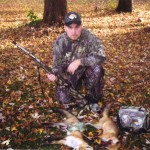 Editor’s Note: To improve the habitat and the amount of wildlife on your hunting lands, hunt coyotes, feral hogs, foxes, raccoons, possums and bobcats. The more predators you can remove from the property you hunt between now and deer season, the more you’ll protect wildlife habitat, and the more food your wildlife will have. As Michael Johnson, a predator trapper and hunter from Plainfield, Georgia, explains, “Since I’ve been hunting these predators on my family’s land, we’ve seen a tremendous increase in the number of turkeys. I trap predators too because they’re very-smart animals and often may spook before we can take our shots. Predators are like cockroaches – you can beat their numbers back but never entirely get rid of them.”
Editor’s Note: To improve the habitat and the amount of wildlife on your hunting lands, hunt coyotes, feral hogs, foxes, raccoons, possums and bobcats. The more predators you can remove from the property you hunt between now and deer season, the more you’ll protect wildlife habitat, and the more food your wildlife will have. As Michael Johnson, a predator trapper and hunter from Plainfield, Georgia, explains, “Since I’ve been hunting these predators on my family’s land, we’ve seen a tremendous increase in the number of turkeys. I trap predators too because they’re very-smart animals and often may spook before we can take our shots. Predators are like cockroaches – you can beat their numbers back but never entirely get rid of them.”
Coyotes generally will circle downwind of the caller. Many places where you set-up you may call in coyotes that you never see, because they’re downwind of you. You may think no coyotes have come to the call, because you haven’t seen them. If you’re hunting solo, you have to have some type of block behind you to keep the coyotes from moving downwind of you. For instance, if you set-up on the edge of a creek or a river bank and put the call 20 to 30 yards in front of you, then when the coyote reaches that area, he’s got to turn and come to you, because he doesn’t want to go swimming.
If you can pinpoint a natural rock face that runs several yards to your left or to your right, you also can block a coyote. As the coyote comes in, the rocks will stop the animal, and it will come down the edge of the rock wall straight to you. Too, coyote hunters can use the numbers of abandoned railroad tracks. If you set-up with a caller 20 yards in front of you, and the railroad track behind you, when the coyote comes to the tracks, he’ll have to turn and come to you, trying to get downwind of the call.
 These very-effective tactics will take coyotes. However, you have to be committed to going out in the heat and calling coyotes. Use all types of scent-eliminating products when you’re coyote hunting. Coyotes have very-keen noses. Although you’re hunting with the wind in your face to reduce the amount of human odor you’re leaving, you still must use scent eliminators.
These very-effective tactics will take coyotes. However, you have to be committed to going out in the heat and calling coyotes. Use all types of scent-eliminating products when you’re coyote hunting. Coyotes have very-keen noses. Although you’re hunting with the wind in your face to reduce the amount of human odor you’re leaving, you still must use scent eliminators.
Predator hunter Michael Johnson explains, “In the springtime when I’ve found that predator calling and shooting predators is much easier than at other times of the year, my friends, my family and I may spend more time calling and shooting predators than we do trapping predators. One of the most-effective calls we use in the spring is a fawn bleat. That’s the time of year that the fawns are being born, and the predators really kick into high gear trying to discover and eat deer fawns and turkey poults. Although when we use a fawn bleat, we mainly harvest coyotes and foxes, that fawn bleat actually will bring in any type of predator to the call.
“What we’ve learned about calling predators is that the calls we select to use are mainly determined by the time of the year we’ll be using them, and what type of predator we’ll be hunting. As I’ve mentioned earlier, in the spring when does are dropping their fawns, you can’t beat the effectiveness of a fawn bleat for calling predators. We’ve been very effective using a cottontail-in-distress call to pull in foxes and coyotes.”
 ** Be sure to check your state’s regulations about trapping and hunting predators. **
** Be sure to check your state’s regulations about trapping and hunting predators. **
To learn more about hunting, check out John E. Phillips’ print, Audible and Kindle books at https://johninthewild.com/books/. You also can download a free Kindle app that enables you to read the book on your iPad, computer or SmartPhone.

